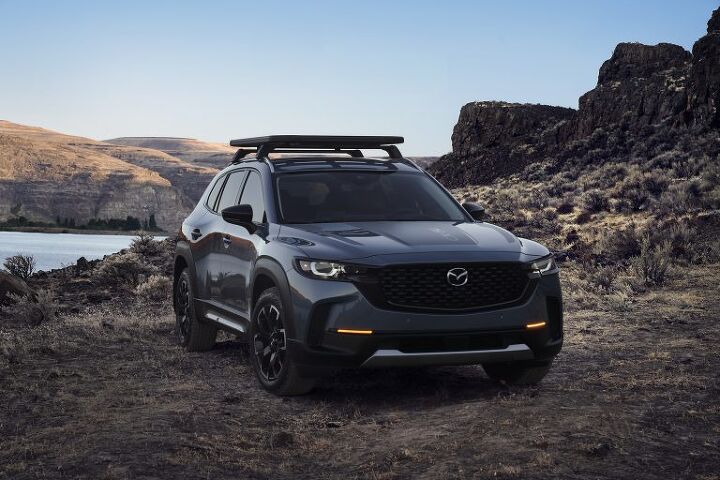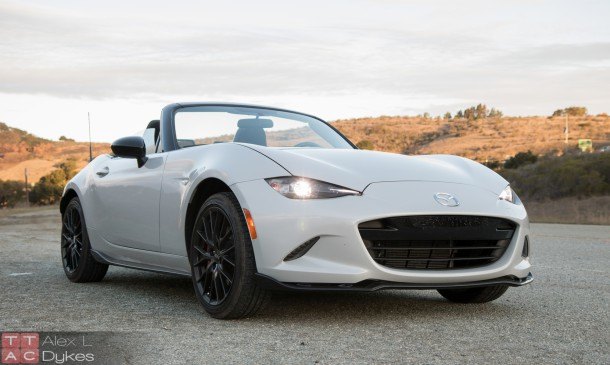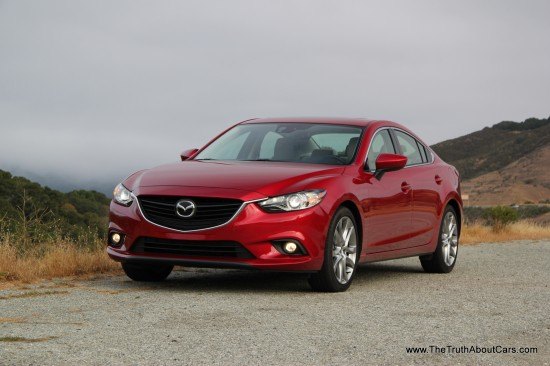#ZoomZoom
Another Zoomy Crossover: Meet the Rugged Mazda CX-50
The Los Angeles Auto Show is this week — yes, it’s actually happening, as of this writing, and this author is boarding a flight for Cali tomorrow — and one of the vehicles that had been teased in advance of the show was the Mazda CX-50.
2017 Mazda CX-5 Grand Touring AWD Review - Crossing Over In Style
The look back. That longing glance at your beloved ride as you walk away is a rite of passage for car enthusiasts. One more gaze at the car’s beautiful lines before you walk into the office can help that first cup of coffee kickstart another day of work.
Until I drove the 2017 Mazda CX-5 Grand Touring, I’ve never looked back at any crossover. Never had the need or desire, since most CUVs have all of the style and personality bred out of them in an effort to attract the widest variety of shoppers. Not the Mazda. The design of this compact crossover is nothing short of stunning.
Mazda's New 'Feel Alive' Campaign Has Us Worried About Brand's Upmarket Push
Mazda’s new “Feel Alive” advertising campaign places consumers as its focal point as the company tries to market itself as an upscale and hip, enthusiast-oriented brand. On Monday, Mazda launched the first commercial — a borderline insulting collection of superficial phrases intended to get you excited about the brand’s new identity.
The spot itself is about as boilerplate new-millennium luxury car commercial as it gets. It opens with a series of attractive actors, all on the cusp of an important moment, as the narrator offers bizarrely simplistic lines of encouragement like “do that thing” and “take that step.” Granted, auto ads became far getting far less chatty about specs during the 1990s. But, over the last decade, too many car spots seem to be copying perfume ads — strange adventures in abstraction that say nothing about the product and cost a fortune to produce.
2016 Mazda MX-5 Miata Review - An Original Reborn (Video)
If there is one constant in the automotive world, it is that every redesigned vehicle gets bigger, more powerful, heavier and more complex. Bucking that trend is Mazda’s latest MX-5, one of the smallest and lightest cars sold in the United States.
Since the launch of the Miata in 1989, Mazda’s tiny roadster has been a beacon of light to those who prefer a “pure” driving experience. The MX-5’s core mission of being an affordable, lightweight, two-seat convertible has hardly changed. More impressive: The 2016 MX-5 is about the same size as the original Miata, and the new roadster is only 182 pounds heavier despite producing 50-percent more power and being 30-percent more fuel efficient. The price tag has also been kept in check. The 2016 model still costs about the same as a mid-sized sedan.
Making the MX-5 even more special is that it stands alone in America. Sure, Alfa is now selling their sexy and expensive 4C here, BMW still has a Z4 roadster, and Scion and Subaru are selling their two-door coupé — but none of these are like the MX-5 and that’s a good thing for Mazda.
Digestible Collectible: 1989 Mazda RX7 GTUs
Mazda just can’t quit the rotary. Magical spinning Doritos are such a significant part of their DNA that, in spite of overwhelming evidence against the Wankel existence thanks to its appetite for fuel, oil, and apex seals, they keep a team of engineers developing it.
In theory, the rotary is the perfect engine for a sportscar. Lightweight, rev-happy, and reasonably powerful — exactly the attributes needed for a lithe corner carver. Back in the late ’80s, just as another enthusiast-focused Mazda was coming on the scene, a special edition RX7 was released. Rather than tape stripes and excess frills, this one came stripped of excess weight, and loaded with performance goodies.
Review: 2014 Mazda6 (With Video)
Whenever I talk to car shoppers, the Mazda6 comes up. No, it’s not because people are confused if it’s a “Mazda 6” or a “Mazda6” or a “Mazda Mazda6.” Although, it does top the Land Rover Range Rover Sport Autobiography for the strangest name on the market. (I prefer to call it a Mazda6.) The reason Mazda’s mid-sized sedan comes up, is because it seems to be a car often shopped, but rarely purchased. In June, it scored 14th in sales for the segment. Surprised? I was. Even the Chrysler 200 and Dodge Avenger (9th and 12th place) outsold it by a wide margin. The low sales numbers piqued my interest enough that I hit Mazda up for a cherry red model to see why.





















Recent Comments